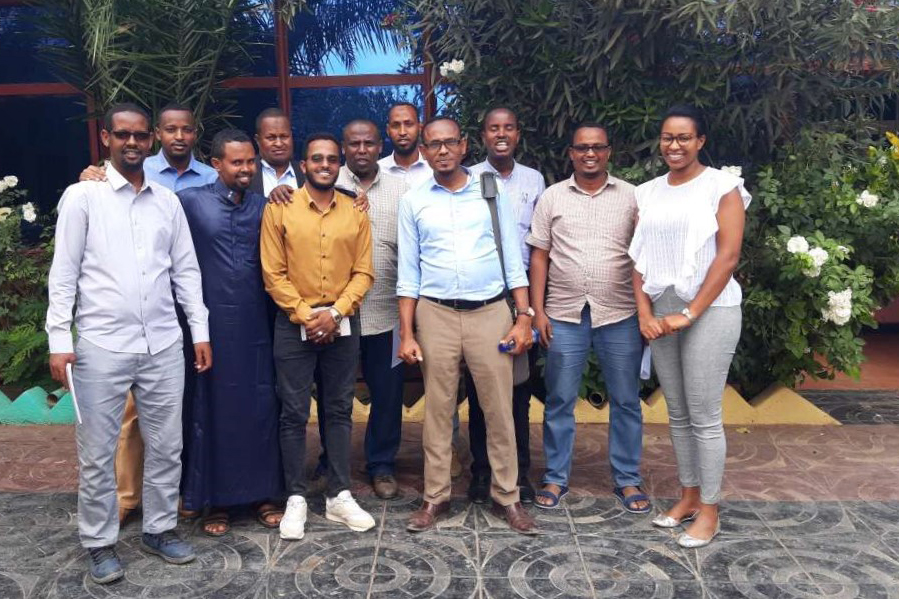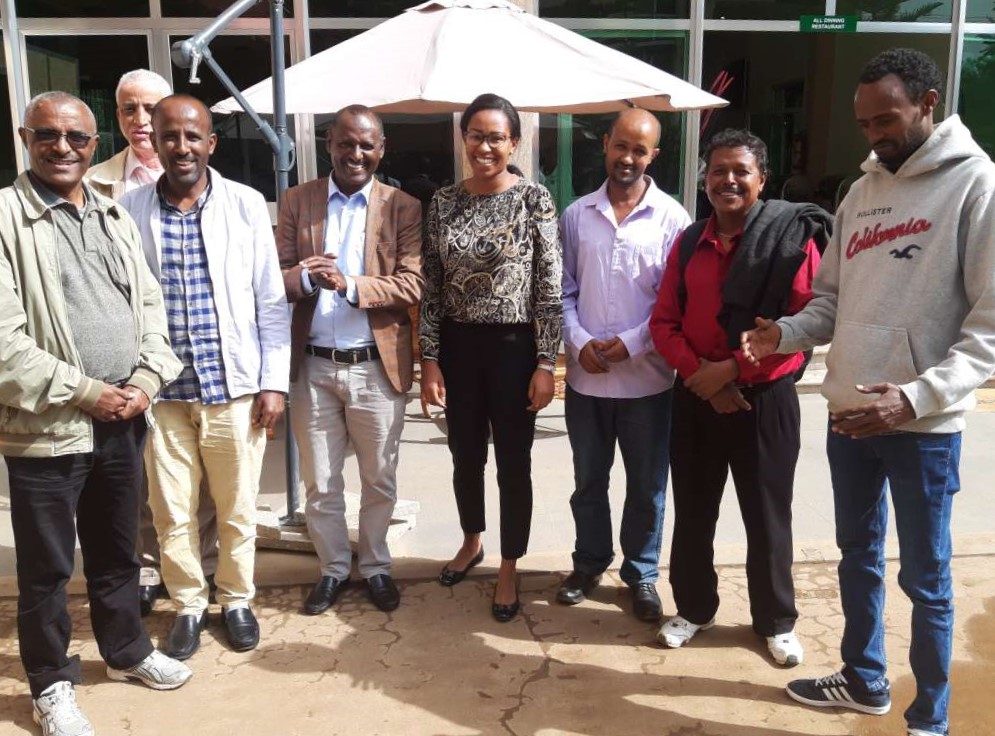Emergency Response Information Management Training for 63 Partners of the Agriculture and Livelihoods Sector in Ethiopia
iMMAP’s information management experts successfully implemented training to improve response coordination by bringing all actors to the same understanding of the humanitarian program cycle (HPC) in the onset of an emergency
Photo of the participants in iMMAP's Emergency Response Information Management Training in Amhara Region
Thanks to this training, partners within the Agriculture and Livelihoods Sector in Ethiopia are now equipped with the tools to understand the HPC and emergency data reporting for improved coordination. These initiatives are made possible with the support of
USAID Office of U.S. Foreign Disaster Assistance (USAID OFDA).
USAID Office of U.S. Foreign Disaster Assistance (USAID OFDA).
The recent El Niño drought in Ethiopia, combined with displacement and return of communities, has worsened the livelihoods and food security situation among the population in agro-pastoral areas. The Ethiopia Agriculture and Livelihoods Sector partners are actively responding to this emergency in a concerted manner, by mobilizing humanitarian partners through a sector coordination mechanism in line with the government’s efforts.
With 5.3 million people negatively impacted by previous drought years, the Agriculture and Livelihoods Sector partners have supported 0.35 million out of 1.4 million food-insecure households in Ethiopia. Through an in-depth humanitarian program cycle (HPC) process, the emergency response shifted to evidence-based needs analysis and planning, which included the triangulation of various sources information through the Humanitarian Needs Overview (HNO) and the Humanitarian Response Plan (HRP). This will help decentralize the exercise at the regional level to improve evidence-based decision making for better strategic planning.
With 5.3 million people negatively impacted by previous drought years, the Agriculture and Livelihoods Sector partners have supported 0.35 million out of 1.4 million food-insecure households in Ethiopia. Through an in-depth humanitarian program cycle (HPC) process, the emergency response shifted to evidence-based needs analysis and planning, which included the triangulation of various sources information through the Humanitarian Needs Overview (HNO) and the Humanitarian Response Plan (HRP). This will help decentralize the exercise at the regional level to improve evidence-based decision making for better strategic planning.
Conducting the training session in SNNPR Region
iMMAP’s Information Management Officers (IMOs) deployed to the Agriculture and Livelihoods Sector in Ethiopia have been providing essential information management (IM) capacity building activities in all 6 regions of Ethiopia, to strengthen the capacity of the government and nongovernmental organizations (NGOs) partners to improve the monitoring and reporting of relief operations.
From the 15th to the 30th of July 2019, iMMAP’s information management experts successfully implemented IM training to 63 partners to improve response coordination by bringing all actors to the same understanding of the humanitarian program cycle (HPC) in the onset of an emergency, by applying all five HPC elements: needs assessment and analysis, humanitarian strategic response planning, resource mobilization, implementation and monitoring, and operational review and evaluation.
From the 15th to the 30th of July 2019, iMMAP’s information management experts successfully implemented IM training to 63 partners to improve response coordination by bringing all actors to the same understanding of the humanitarian program cycle (HPC) in the onset of an emergency, by applying all five HPC elements: needs assessment and analysis, humanitarian strategic response planning, resource mobilization, implementation and monitoring, and operational review and evaluation.
Photo of the participants in the Somali Region
Through these capacity building activities, partners gain an understanding of monitoring tools, data collection and analysis, dissemination of information products to inform effective food security programming (minimizing gaps and overlaps), and communication with food security stakeholders.
Thanks to this training, partners within the Agriculture and Livelihoods Sector in Ethiopia are now equipped with the tools to understand the HPC and emergency data reporting for improved coordination. These initiatives are made possible with the support of USAID Office of U.S. Foreign Disaster Assistance (USAID OFDA).
Thanks to this training, partners within the Agriculture and Livelihoods Sector in Ethiopia are now equipped with the tools to understand the HPC and emergency data reporting for improved coordination. These initiatives are made possible with the support of USAID Office of U.S. Foreign Disaster Assistance (USAID OFDA).



